Burning Question: How Can I Heat My Home for Less?
In the first of our new 'Burning Question' series, three experts help Houzz readers slash their heating bills
Welcome to our new ‘Burning Question’ series, where we’ll ask three experts to answer those tricky home and design questions that keep you up at night. This first one is for anyone who breaks into a sweat at the thought of their next power bill; here, three professionals tell us how to slash heating costs without sacrificing warmth and comfort.
Next week, a fresh panel of experts will guide us through selecting and installing a new pendant light for the area above the dining table. Do you have a burning question that you’d love answered? Tell us in the Comments section and we’ll get our experts onto it.
Next week, a fresh panel of experts will guide us through selecting and installing a new pendant light for the area above the dining table. Do you have a burning question that you’d love answered? Tell us in the Comments section and we’ll get our experts onto it.
One of the first steps, Simpson says, is to keep the heat in. “A lot of heat can be lost through the glass of windows. Be sure to cover windows with blinds or curtains.” The Ausgrid website suggests keeping heat in by covering south-facing windows while reducing the amount of cover on north-east and west-facing windows in order to let the winter sun in.
You might also consider insulating your home. It will help keep your home naturally warmer in winter and cooler in summer and, according to Ausgrid, can slash heating costs by up to a quarter, while helping heaters and air conditioners run more efficiently.
You might also consider insulating your home. It will help keep your home naturally warmer in winter and cooler in summer and, according to Ausgrid, can slash heating costs by up to a quarter, while helping heaters and air conditioners run more efficiently.
2. Don’t overheat rooms
“The ideal temperature for your home in winter is between 18 and 21°C, but according to a survey we conducted, most Australians go above this. For every extra degree you heat your home, you add about 10 per cent to your heating costs,” Simpson says.
Tip: “Choose a heater with a thermostat or timer to ensure that you don’t unintentionally overheat the room.”
Browse more gorgeous bedrooms
“The ideal temperature for your home in winter is between 18 and 21°C, but according to a survey we conducted, most Australians go above this. For every extra degree you heat your home, you add about 10 per cent to your heating costs,” Simpson says.
Tip: “Choose a heater with a thermostat or timer to ensure that you don’t unintentionally overheat the room.”
Browse more gorgeous bedrooms
3. Only heat rooms you’re using
Heating rooms you don’t spend time in is a waste of energy in every sense. “Only heat the rooms you’re actually using,” Simpson says. “Close the doors in the room you want to heat. And if you have central heating, zone it so you’re only warming the part of the house you’re using.”
According to the Ausgrid website, keeping your windows and doors closed and drawing the curtains at night will all cut heating costs.
Tip: You should also close the doors to bathrooms with exhaust fans, as these can let cold air into a heated home, making heaters work harder than they have to.
Heating rooms you don’t spend time in is a waste of energy in every sense. “Only heat the rooms you’re actually using,” Simpson says. “Close the doors in the room you want to heat. And if you have central heating, zone it so you’re only warming the part of the house you’re using.”
According to the Ausgrid website, keeping your windows and doors closed and drawing the curtains at night will all cut heating costs.
Tip: You should also close the doors to bathrooms with exhaust fans, as these can let cold air into a heated home, making heaters work harder than they have to.
4. Layer up
“Dress warmly. It’s okay to wear a jumper and socks inside during winter, or to throw an extra blanket on the bed. That way you’re not heating more than you need,” Simpson says.
“Dress warmly. It’s okay to wear a jumper and socks inside during winter, or to throw an extra blanket on the bed. That way you’re not heating more than you need,” Simpson says.
5. Prevent heat escaping… or the chill getting in
“Draught proof under doors and around windows. It’s cheap and easy, and makes a real difference,” Simpson says. “Check your local hardware store for draught stoppers, door snakes and window-sealing tape.”
A complete guide to curtains
“Draught proof under doors and around windows. It’s cheap and easy, and makes a real difference,” Simpson says. “Check your local hardware store for draught stoppers, door snakes and window-sealing tape.”
A complete guide to curtains
Dave Smith, general manager for sales and marketing, Fujitsu General Australia
1. Choose an energy-efficient form of heating
Heaters vary greatly in terms of running costs and performance. If reducing power usage is a priority, it’s important to seek out an energy-efficient style. According to Smith, reverse-cycle air conditioners (such as this one from Fujitsu) are one of the most efficient and cost-effective ways to heat your home. In fact, Simpson says they are three to six times more efficient than electric resistance heating. They also have the added benefit of providing cooling in summer.
1. Choose an energy-efficient form of heating
Heaters vary greatly in terms of running costs and performance. If reducing power usage is a priority, it’s important to seek out an energy-efficient style. According to Smith, reverse-cycle air conditioners (such as this one from Fujitsu) are one of the most efficient and cost-effective ways to heat your home. In fact, Simpson says they are three to six times more efficient than electric resistance heating. They also have the added benefit of providing cooling in summer.
2. Look for energy-saving functionality
You can cut costs further by seeking out a model with the latest energy-efficient features, Smith says. “Human Sensor Technology, which is available on selected Fujitsu models, will automatically switch the system to energy-saving mode when no movement is detected in a room for 20 minutes.” Also look for models with efficient controller systems. “A model with timer settings, for instance, will allow you to pre-warm a room before you wake up or return home. Using timers minimises energy output while keeping temperatures at a desired level.”
You can cut costs further by seeking out a model with the latest energy-efficient features, Smith says. “Human Sensor Technology, which is available on selected Fujitsu models, will automatically switch the system to energy-saving mode when no movement is detected in a room for 20 minutes.” Also look for models with efficient controller systems. “A model with timer settings, for instance, will allow you to pre-warm a room before you wake up or return home. Using timers minimises energy output while keeping temperatures at a desired level.”
3. Heating a big home? Go ducted
“A ducted reverse-cycle air conditioner system offers greater flexibility in a large home,” Smith says. “It gives you the ability to heat or cool your house via discreet grilles in the ceiling. Ducted air conditioning can also be ‘zoned’, which means each area can be switched on or off as required. So you might have bedrooms set up as Zone One and kitchen and living room as Zone Two.”
“A ducted reverse-cycle air conditioner system offers greater flexibility in a large home,” Smith says. “It gives you the ability to heat or cool your house via discreet grilles in the ceiling. Ducted air conditioning can also be ‘zoned’, which means each area can be switched on or off as required. So you might have bedrooms set up as Zone One and kitchen and living room as Zone Two.”
4. Book a regular service
“A poorly maintained air conditioner needs to work much harder to heat or cool the home,” Smith says. “Over time, dust accumulates on the filter and if left uncleaned, this can clog the indoor unit and reduce air flow.
“Having your air conditioner serviced every one to two years, depending on usage, by a licensed technician keeps the system running smoothly and means that any performance issues will be identified early before they become serious problems.”
How to choose an air conditioner
“A poorly maintained air conditioner needs to work much harder to heat or cool the home,” Smith says. “Over time, dust accumulates on the filter and if left uncleaned, this can clog the indoor unit and reduce air flow.
“Having your air conditioner serviced every one to two years, depending on usage, by a licensed technician keeps the system running smoothly and means that any performance issues will be identified early before they become serious problems.”
How to choose an air conditioner
Tristan Smith, managing director at Big Ass Solutions Australia, manufacturers of Haiku fans
1. Give heaters a boost with ceiling fans
Many people think fans are only useful for cooling, but they can also be a very effective way to distribute heat in winter, Smith says: “Fans act as a stirring stick, mixing air of different temperatures until a comfortable, uniform temperature is achieved. They can eliminate uncomfortable cold spots that form near windows and doors, or in rooms with fewer vents. They can also noticeably reduce heating bills, especially in homes with vaulted ceilings.”
1. Give heaters a boost with ceiling fans
Many people think fans are only useful for cooling, but they can also be a very effective way to distribute heat in winter, Smith says: “Fans act as a stirring stick, mixing air of different temperatures until a comfortable, uniform temperature is achieved. They can eliminate uncomfortable cold spots that form near windows and doors, or in rooms with fewer vents. They can also noticeably reduce heating bills, especially in homes with vaulted ceilings.”
2. Focus on shape and speed
“Most fans come with a reverse function. The idea is that by reversing the fan the breeze blows upward, so you can mix the air in space without creating a chilly draft. We have tested this theory and disproven it to an extent,” he says. “The most effective and energy-efficient way to distribute warm air is by using ceiling fans with sculpted aerofoils and a wider range of speed settings than typical three-speed fans. A Haiku fan running in the forward direction at the slowest speed distributes heated air far more effectively than a reversed fan, without creating a detectable draft.”
Boosting your heating with fans can be particularly cost-effective in taller spaces, Smith says. “Hot air rises, which means the air at the ceiling is hotter than the air at floor level. This is called ‘thermal stratification.’ In high-ceilinged homes, the temperature near the ceiling can easily be 3°C to 5°C greater than at floor level, so your heater is running harder and longer than it actually needs to. The air circulation from ceiling fans pushes the rising hot air back down to where you need it, triggering your heater to shut off sooner and reducing energy use.”
“Most fans come with a reverse function. The idea is that by reversing the fan the breeze blows upward, so you can mix the air in space without creating a chilly draft. We have tested this theory and disproven it to an extent,” he says. “The most effective and energy-efficient way to distribute warm air is by using ceiling fans with sculpted aerofoils and a wider range of speed settings than typical three-speed fans. A Haiku fan running in the forward direction at the slowest speed distributes heated air far more effectively than a reversed fan, without creating a detectable draft.”
Boosting your heating with fans can be particularly cost-effective in taller spaces, Smith says. “Hot air rises, which means the air at the ceiling is hotter than the air at floor level. This is called ‘thermal stratification.’ In high-ceilinged homes, the temperature near the ceiling can easily be 3°C to 5°C greater than at floor level, so your heater is running harder and longer than it actually needs to. The air circulation from ceiling fans pushes the rising hot air back down to where you need it, triggering your heater to shut off sooner and reducing energy use.”
Tell us
Do you have a particular question you’d like answered in our new Burning Question series? Tell us in the Comments section below and we’ll put it to our experts.
More
Find local heating contractors
Do you have a particular question you’d like answered in our new Burning Question series? Tell us in the Comments section below and we’ll put it to our experts.
More
Find local heating contractors


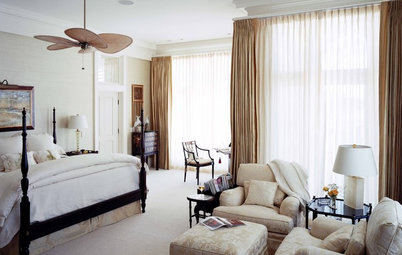
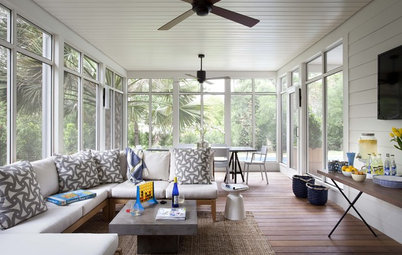
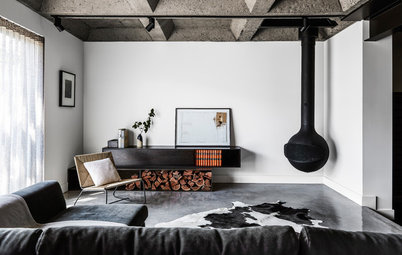
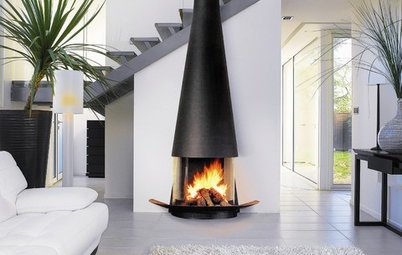
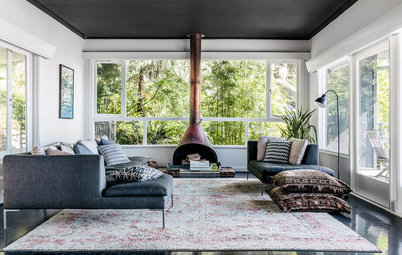
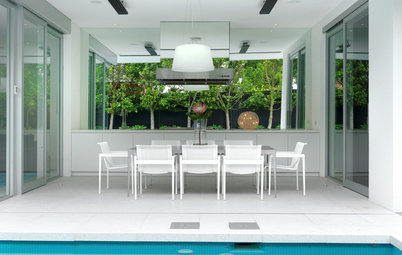
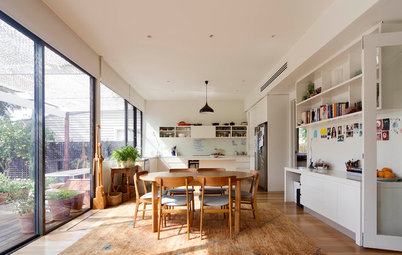
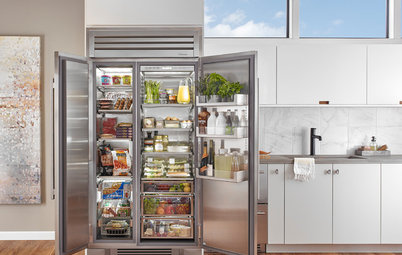
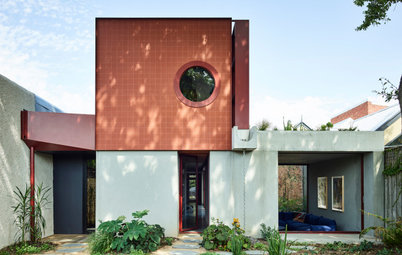
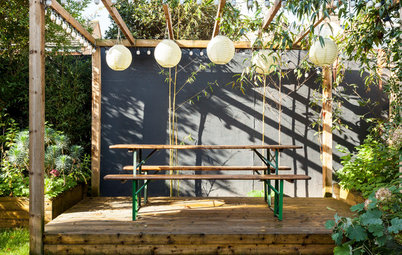
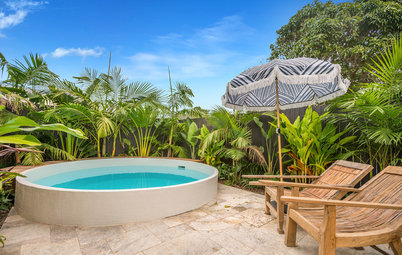
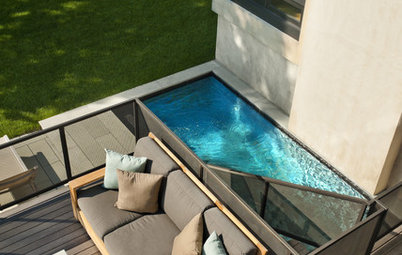
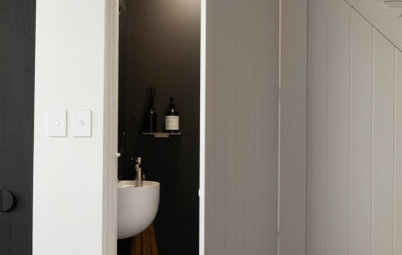
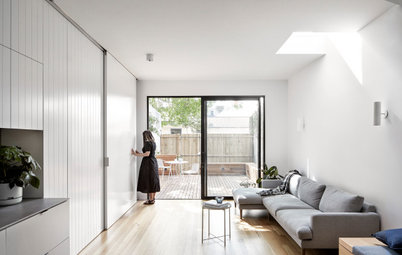

1. Keep in the heat
According to the Ausgrid website, heating and cooling account for a whopping 25 per cent or so of the average household’s energy use, so it makes sense to cut it where you can.